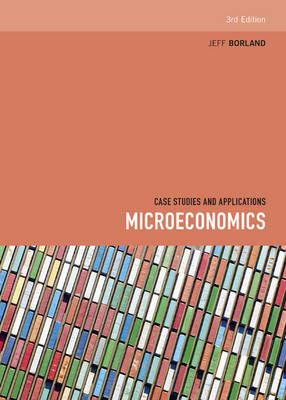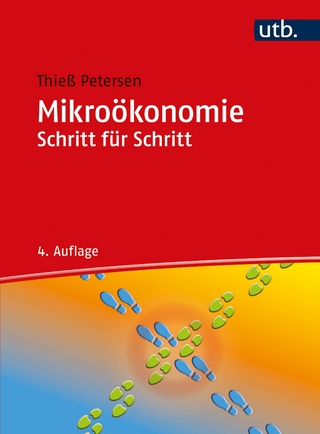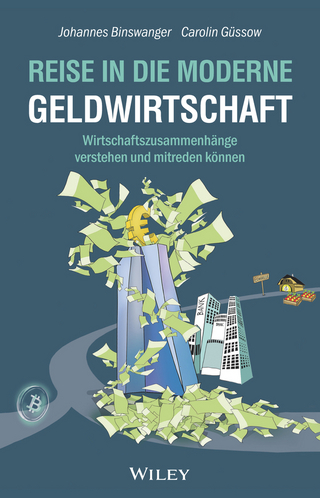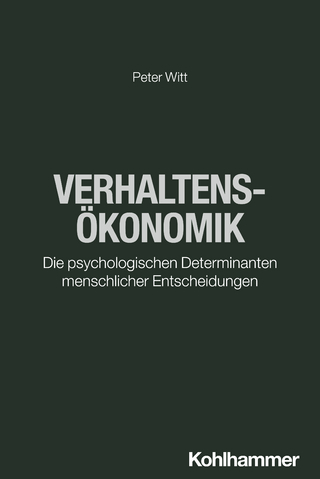
Microeconomics: Case Studies and Applications
Cengage Australia (Verlag)
978-0-17-036593-2 (ISBN)
- Titel z.Zt. nicht lieferbar
- Versandkostenfrei innerhalb Deutschlands
- Auch auf Rechnung
- Verfügbarkeit in der Filiale vor Ort prüfen
- Artikel merken
Case studies differ from news articles in that they are written specifically for students at a level they can easily relate to, and are presented in such a way that the theoretical concept being taught can be applied. It’s intended as a stepping stone into using authentic articles as they progress.
Each case study presents a different application of a core concept or theory. The core concept that is applied in each case study is listed in the book’s table of contents. As well as the main text, which presents the application of the core concept, each case study contains a range of extra material. A ‘Theory refresher’ section provides a quick way for students to revise a key concept or theory that is important for understanding the application in that case study. In most case studies, the theory refresher is on the core concept or theory being applied; the only exceptions come where a core concept has been applied in a previous case study and covered in the theory refresher in that case study. The table of contents also lists the theory refresher for each case study. Also appearing in each case study is a set of ‘Key lessons’ that summarise the main points, ‘Some questions to think about’ and ‘Ideas for further reading’.
Jeff Borland is Truby Williams Professor of Economics at the University of Melbourne. He has been teaching microeconomics for 25 years. He is a past winner of The University of Melbourne's Ed Brown Teaching Award, and has received a Carrick Citation for Outstanding Contribution to Student Learning. His main research interests are analysis of the operation of labour markets in Australia, program and policy evaluation and design, Australian economic history, and sports economics. His current teaching is in the areas of microeconomics, sports economics, and Australian and world economic history.
1.Scarcity, decision-making, incentives and trade: introduction to key concepts in economics
1.1 What did that really cost you?
1.2 Opportunity cost and productivity in agriculture
1.3 The benefits and costs of a university degree
1.4 How incentives make the world go round
1.5 Do incentives really matter: Can economic policy change the timing of births and deaths?
1.6 How creating extra opportunities for trade can improve wellbeing: kidney exchange and ICT
1.7 Are we always rational?
2.Demand, supply and equilibrium in competitive markets
2.1 What determines demand?
2.2 Does equilibrium exist? Evidence from experiments
2.3 Something fishy? No, it’s just a matter of supply and demand
2.4 Explaining changes in the price of oil: Not so slippery when you use supply and demand
2.5 The great economic spectacle: the ups and downs of the US$/A$ exchange rate
2.6 Reducing child labour: Which policy works best?
2.7 How much should we protect our natural environment?
2.8 Are ticket scalpers worse than used car salesmen?
2.9 Careful how you punish: why restricting CEOs’ pay may hurt us more than them
2.10 Has the alcopop tax been a party pooper?
2.11 Using prediction markets in business and public policy
3.International trade
3.1 Why do we trade?
3.2 Infinitely inventive: a million ways of protecting your country’s producers (and harming everyone else)
3.3 Have globalisation and the expansion of international trade improved wellbeing?
3.4 What’s ours is ours – Putting a stop to exports
4.Market failure and government policy
4.1 Externalities are everywhere
4.2 How can we unjam traffic jams?
4.3 Why would we want to trade pollution?
4.4 Getting vaccinated against influenza: there is a ’win-win’ in economics
4.5 The Bush Tender scheme and conservation activity
4.6 Why is copying bad?
5.Theory of the firm and managerial economics
5.1 Are costs important?
5.2 How much does a university education cost?
5.3 Cutting costs by finding new ways to produce
5.4 Should you make or should you buy?
5.5 The path to market power: When can your business charge high prices without losing all of its customers?
5.6 The Resource Super Profits Tax: how it could have been super
5.7 The ups and downs of supply in Australia’s iron ore industry
5.8 The mystery of sausage roll prices
5.9 Innovation and imitation: dynamics in a competitive market
5.10 Sell low and sell high: making higher profits using price discrimination
5.11 Smart regulation of a monopoly: how Australia pays less for pharmaceutical drugs
6.Game Theory
6.1 When telling the truth is the best policy: using game theory to bid on eBay
6.2 Can game theory make you a game show champion?
6.3 When two sides go to war: how nobody wins
6.4 The corruption game
6.5 It’s not how you move but when you move that matters
7.Labour markets
7.1 Beauty or computer skills: Which will most increase your pay?
7.2 Superstars and the growing incomes of the very rich
8.Economics of information
8.1 To be sure, insure
8.2 Does pay for performance work?
| Erscheinungsdatum | 23.01.2016 |
|---|---|
| Sprache | englisch |
| Maße | 176 x 245 mm |
| Gewicht | 710 g |
| Themenwelt | Wirtschaft ► Volkswirtschaftslehre ► Mikroökonomie |
| ISBN-10 | 0-17-036593-X / 017036593X |
| ISBN-13 | 978-0-17-036593-2 / 9780170365932 |
| Zustand | Neuware |
| Informationen gemäß Produktsicherheitsverordnung (GPSR) | |
| Haben Sie eine Frage zum Produkt? |
aus dem Bereich


